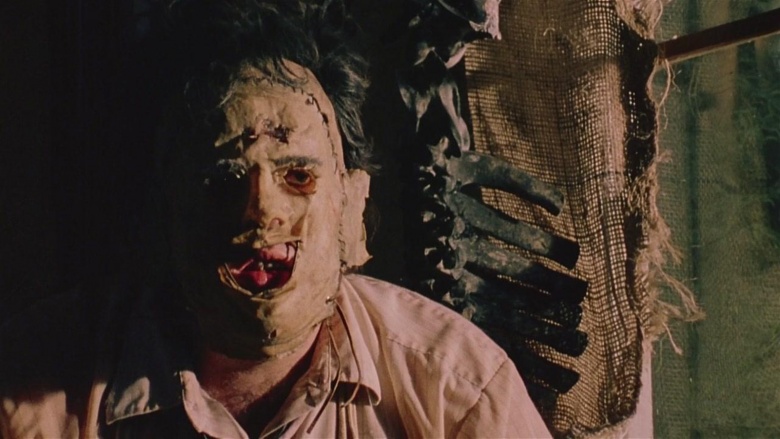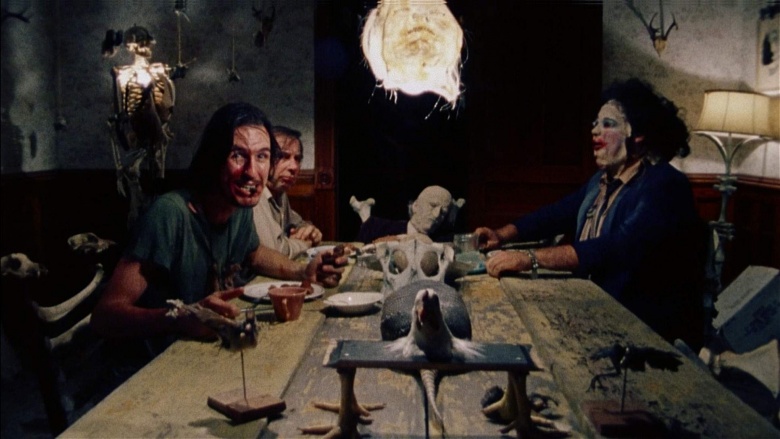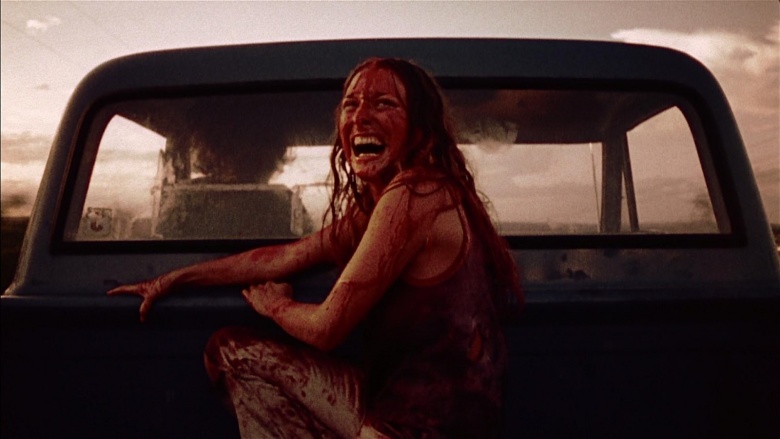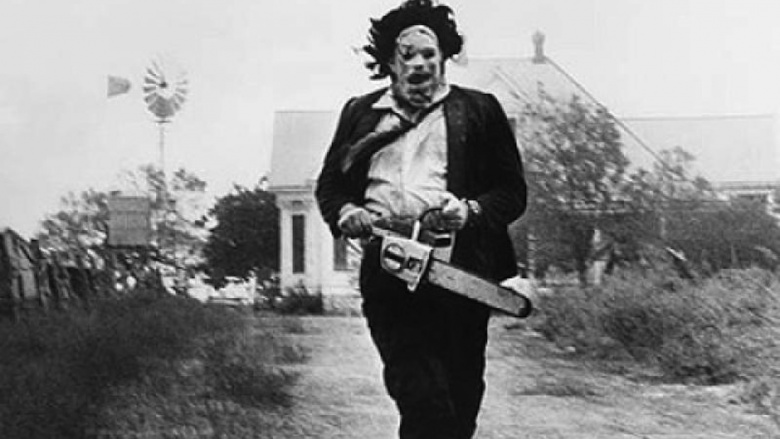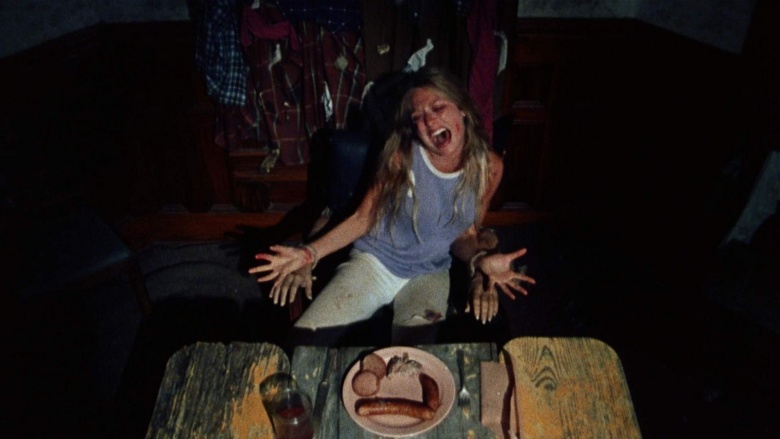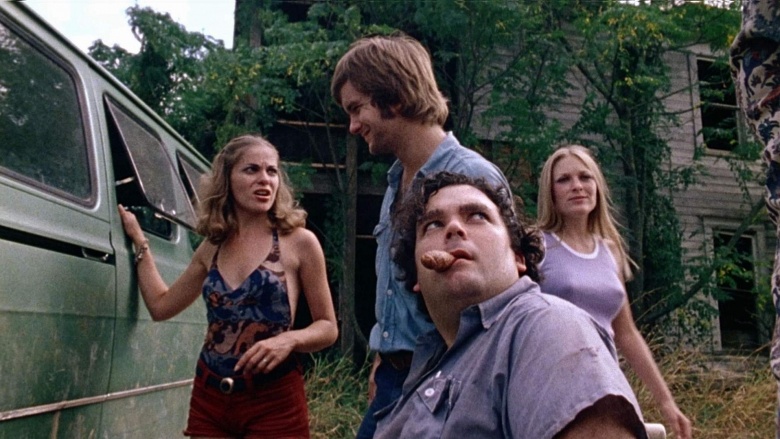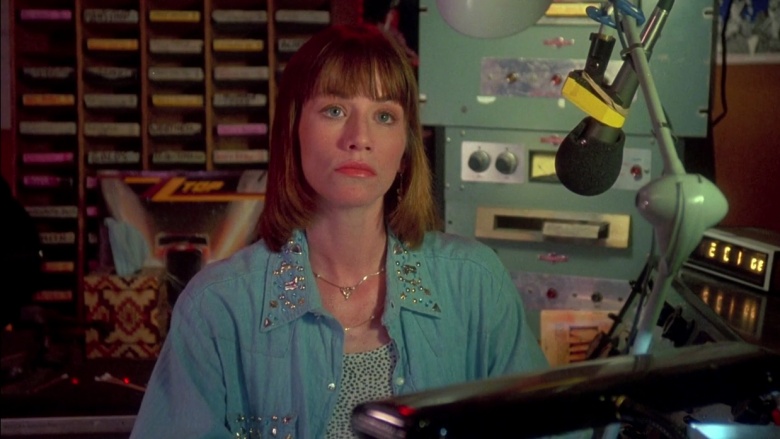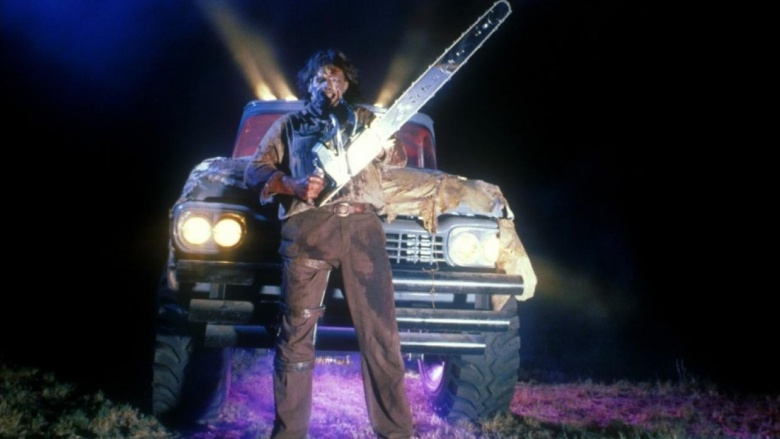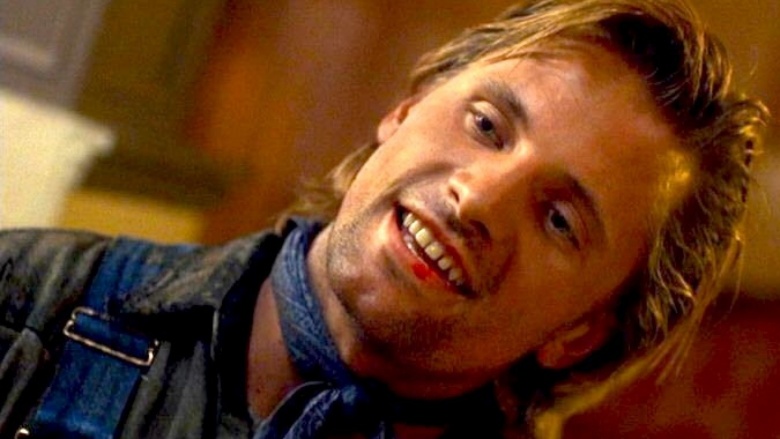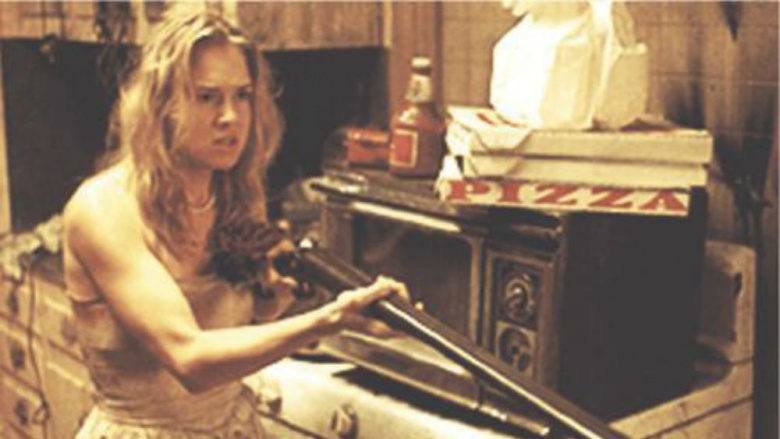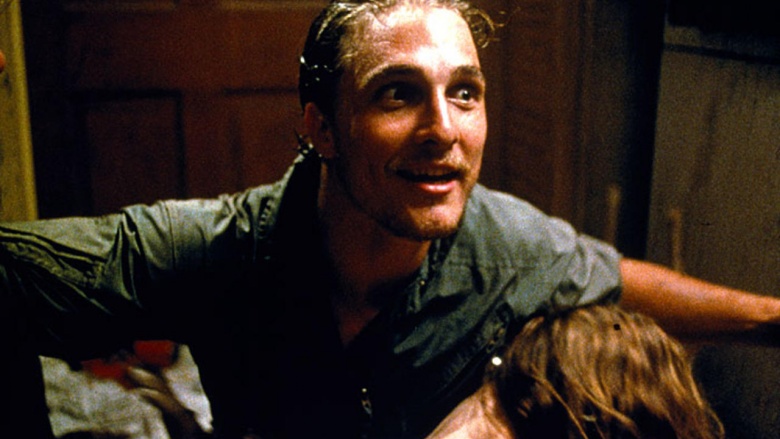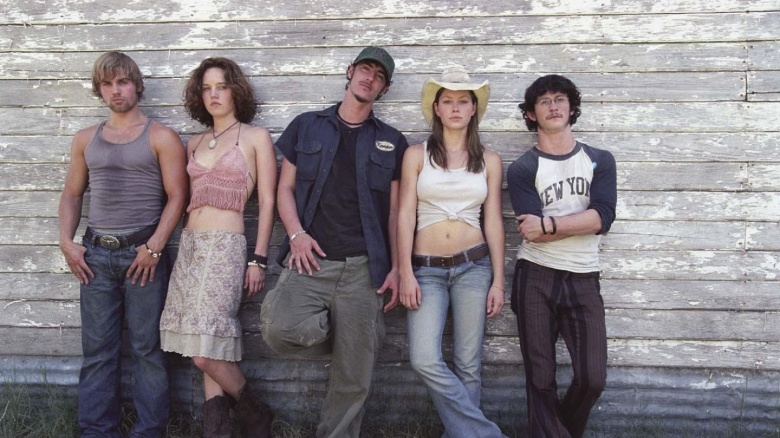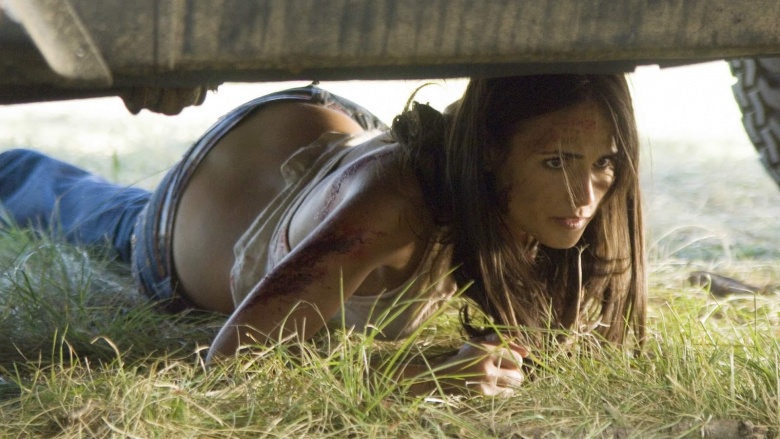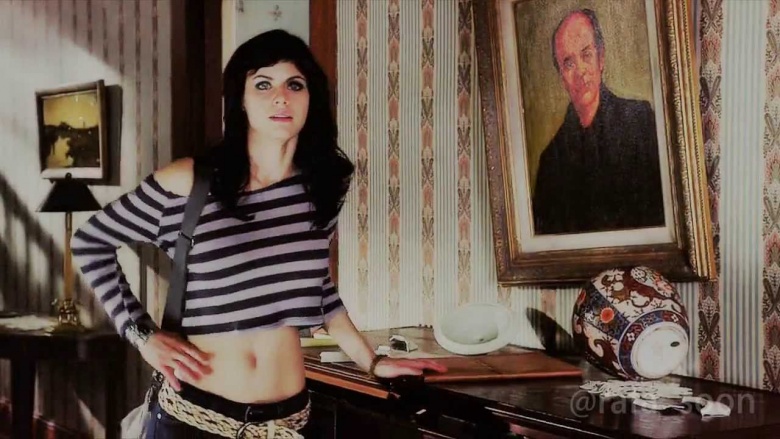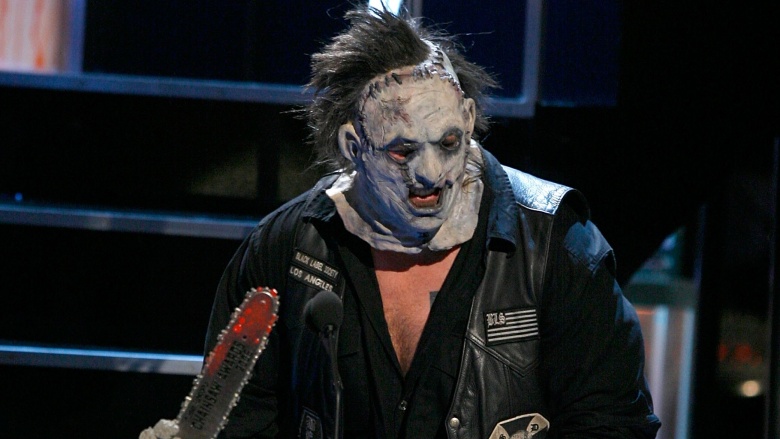The Dark Untold Truth Of The Texas Chain Saw Massacre
The Texas Chain Saw Massacre is one of the most important horror films of all time. Not only did it inspire a half dozen sequels and reboot films, it was also a completely new addition to the horror genre that opened the floodgates of gore (and the cinematic realizations of a traveler's worst nightmare). Leatherface is still one of the most unsettling villains in movie history, and there's a rich history behind the crazy series that even the most diehard of Sawyer/Hewitt family fans might be surprised to learn.
Under the boardwalk
When director Tobe Hooper and writer Kim Henkel decided to team up again—they'd previously collaborated on the low-budget, little-seen indie Eggshells five years prior—they knew they wanted to do something in the horror milieu. But what? At first, the pair considered a sinister version of the already-dark Hansel and Gretel fable, but then they looked to another type of fairy tale narrative: Trolls. Yep, trolls. If they'd have gone with their original thinking, the movie would've been called Head Cheese and followed a group of trolls living under a bridge. It might've been about as successful as Eggshells if they hadn't come up with a fresher concept.
Ed Gein, and then some
Any Texas Chain Saw fan worth his or her salt knows that Leatherface was in large part inspired by real-life killer Ed Gein (who was also kept in mind by Alfred Hitchcock during the development of Psycho), but he wasn't the only skin-loving psychopath to lend some creepy realism to the story. Hooper told Texas Monthly that the idea for Leatherface was actually derived from a story his doctor once told him about his med school pranks. "When he was a pre-med student, the class was studying cadavers, and he went into the morgue and skinned a cadaver and made a mask for Halloween," Hooper said. Sometimes truth really is stranger than fiction.
Hooper also looked to a Texan teen serial murderer named Elmer Wayne Henley. He watched Henley own up to his crimes, and found his post-apprehension behaviors fascinating. "He kind of puffed out his chest and said, 'I did these crimes, and I'm gonna stand up and take it like a man.' Well, that struck me as interesting, that he had this conventional morality at that point. He wanted it known that, now that he was caught, he would do the right thing. So, this kind of moral schizophrenia is something I tried to build into the characters," Hooper explained.
As for the movie's mood, Hooper and Henkel had to look no further than the news to get a read on the cultural unrest that existed at the end of the Vietnam War, and the idea to implement a chainsaw as the weapon of choice came from a particularly terrible holiday shopping trip to a local Montgomery Ward's. Since it was so close to Christmas, Hooper remembered that the store was completely packed, and that's when the a daydream about mowing people down with a chainsaw began to trickle into his brain. Just kidding ... well, mostly.
"I looked down and there was a rack of chainsaws in front of me for sale. I said, 'if I start the saw, people would just part. They would get out of my way,'" he explained to Interview Magazine. "I'd been working on this idea of young people, college students, in isolation. We were going through a gasoline shortage in the country at the time. People had to queue up in their automobiles at gas stations, sometimes for miles. There was gas rationing. And I was hearing a lot of lies on television. Politically, the times were interesting; they were kind of amplified. So the idea came to me in the car of how to pull all of these elements together. It came really quickly—the whole configuration of the characters—and the loop, the way the story loops inside itself."
Hooper's real-life torture
Seeing as production on TCSM took place in the triple-digit Texas summer weather, the cast and crew were bound to have a few gripes, but things were even more intense during filming than anyone could've expected.
For starters, Hooper kept his Leatherface actor Gunnar Hansen quarantined from the rest of the cast until it was time for him to elicit some real scares, so when he finally popped onto the scene, he gave his co-stars quite a fright. It was just one of many methods Hooper would use to evoke honest tension from his stars—"we wouldn't let Franklin [Paul Partain] have lunch with the other actors, and we wouldn't let him bathe," he admitted to Interview—and he also relied on repetition to make sure he got the right shot. "For instance, when Sally breaks through the door of the service station, she had to do that 17 times, and I'm not sure that we had kneepads or could afford them, but Marilyn [Burns] was totally into it."
Speaking of Burns, the leading actress caught the brunt of the physical devastation of the movie, as she was given a black eye by being actually (voluntarily) punched in the face by a co-star, her costume was covered in some of her real blood after she was scratched by branches in the woods during a running scene, and her finger slice in the dinner scene was a real-life gash. Yow. Luckily, even though he was handling a real chainsaw (the chain was later removed), Hansen wasn't hurt even when he fell while holding it.
Grass in the field yields
According to Hansen's autobiographical account of the making of the movie, Chain Saw Confidential: How We Made the World's Most Notorious Horror Movie, the guy whose home served as the set for the film (and later became a restaurant) was growing a few acres of marijuana out in the back field at the time, and of course the cast and crew helped themselves to it. In fact, one of the editors made the them all some weed brownies, which they ate before commencing with filming their last few scenes, including rather dangerous stuntwork, under the hazy influence of the drug.
Actor John Larroquette also did the ominous opening narration of the movie, and he was basically paid for his work with a joint. As he explained to the A.V. Club, he met Hooper through a mutual friend during a trip to a small town in Colorado, and they got along really well at the time. A couple of years later, Hooper called him up and asked him to read a few lines for the film for free, and since he'd had some DJing experience at the time, he was agreeable to it. "I went into a studio, saw the piece of paper, read it for him, recorded it, said adios, he gave me a joint, I think as payment, and that was that." Larroquette never bothered actually watching the movie, or any of its successors, but things did ultimately pay off for him when he was asked back to narrate the rebooted series almost 30 years later. "When they re-imagined it again without Tobe, I was called in to do the narration again, and actually got paid really well for it. So, the favor I did in the '70s for a friend for no money came full circle, and I actually made a great deal of money from it later on."
Beef ... it's not what's for dinner
One of the central themes of the first Texas Chain Saw movie was the way that the victims were butchered in such similar ways as animals — by being stuffed into a freezer, bashed in the head with a sledgehammer, and hung on meat hooks, for instance. It's then implied that they were being killed for the family's meat stock (uh, and to add variety to Leathy's face mask collection), which is only bolstered by the score's inclusion of slaughter house sounds.
Hooper, who himself had become a vegetarian due to the perceived cruelty of the meat industry, actually used the slaughterhouse he'd pass by on regular drives as a set for the film because it played such a heavy part in the philosophical undertones of the pic. "I had an experience in a restaurant one time where there was a huge trolley with beef being carved up, and I just transposed different images onto it," he told Interview. "Like, what if there was a nice little cow there with a bowtie and a knife carving up humans? ... It always disturbed me. It became part of the psychology of the film."
He later admitted that he "thought the heart of the film was about meat," even though the characters' cannibalism isn't directly confirmed in the original, and others agreed. Fellow genre auteur Guillermo del Toro claims he went meat-free for a while as a result of the movie, and even PETA has given the film the nod for being among the most pro-veg flicks of all time.
Mo money, mo problems
The Texas Chain Saw Massacre was a massive success at the box office (it earned $30.8 million, which is about $142.9 million when adjusted for inflation). However, the cast and filmmakers involved got little more than squat out of it (still more than Larroquette, of course, but not by much). As Hansen recalled in an interview with Entertainment Weekly, his first check was "47 dollars and seven cents ... We made virtually no money." He estimated that his shooting salary was about two dollars an hour, which was the federal minimum wage that year.
Due to a cruddy distribution deal with the now-defunct Bryanston Distributors (a company with alleged mafia ties), little money trickled downhill to them, and the cast grew furious at Hooper—not knowing that he was no better off than they were. New Line Cinema eventually came in to purchase the home video distribution rights after Bryanston defaulted on the millions owed to the TCSM team, and the company did deepen the director's pockets a little bit, with almost a million dollars given to the filmmakers. However, some of the cast—particularly Ed Neal—have had a long-standing beef with Hooper over his perceived underpayment ever since. Talk about bad blood.
This audition was a scream
A dozen years after the first film's triumphant release, Hooper and Henkel again teamed up for The Texas Chainsaw Massacre 2—but this time, they didn't have as much free rein. New Line Cinema nosed into the creative process, and execs weren't quite as fond of their original idea, which had been to follow up with a whole town of cannibals for what would've been titled Beyond the Valley of the Texas Chainsaw Massacre. Screenwriter L.M. Kit Carson was brought in to give it the carnival vibe the sequel eventually came to have. They still got to make it a spoof of the original (and of the new Reaganism era during which it was released) and even had a cheeky The Breakfast Club-themed family photo for a poster.
The most storied aspect of the first sequel, though—well, apart from the fact that co-star Dennis Hopper is rumored to hate the movie—was Caroline Williams' audition. The actress, who'd play the radio host who becomes the Sawyer family's (yes, Leatherface's crew has a last name in this one) latest victim of note, was called in to read for the part and said she noticed that her script wasn't very line-heavy. Instead of going in and merely reading the few dialogue bits available, she decided to improvise by going absolutely bananas before she even set foot in the audition room.
"I'm watching these actresses come and go; the ebb and the flow, and the room is incredibly quiet. They are coming out very cool and unruffled. I thought at the very least that if I'm not going to be cast I'm going to go down fighting," she recalled to Starburst Magazine. "So I simply took the instruction and followed the directions. I ran screaming down the hallway. I ran into the audition room, slammed the door, and pulled the chairs right out from under Tobe Hooper and Kit Carson. I piled them in front of the door, and I backed into a corner, and I played the scene. Tobe and Kit just walked up incredibly close to me. They stood directly in front of me and then they just looked at each other, and I thought I'd done this okay. Before I even left that day, I'd been hired." Take note, would-be slasher pic ingenues: that's how you set yourself apart right there.
Directorial dis
After Texas Chainsaw Massacre 2 failed to live up to the hype of the original (just $8 million made on a reported $4.7 million budget), the studio handed the reins over to new writer-director duo Jeff Burr and David J. Schow, and they even wedged Leatherface's name into the title for good luck. None of that helped, though, because the studio ended up so ensnared in a battle with the MPAA that the movie couldn't even make it into theaters on time for its original release date until it got that R rating (they had to resubmit it a whopping 11 times, slashing chunks of gore here and there until it was tame enough to pass cinematic muster).
Even crazier is what happened next. Reportedly, test audiences who screened the movie were so upset by the death of Ken Foree's character Benny that the studio decided to film a new ending where he survives without telling the director about it. As Burr told Icons of Fright, he'd been let go while the studio hashed it out with the ratings board, so he had no idea the extra scene had been added until he literally watched it in the theater. He was so upset that he called the studio and asked them to take his name off of the movie altogether (but the reel prints had already been made and distributed). Yikes.
Adding injury to insult
As if the woes associated with Texas Chainsaw III weren't bad enough, then-unknown actor Viggo Mortensen (not the first choice for his role, by the way) suffered a crushing blow at the hands of one of his co-stars. As Foree would tell audiences at screening Q&As for the pic, he actually broke Mortensen's ribs during their fight scene when he threw the actor to the ground. For a split second after the move, you can see Mortensen groan and clutch the injured area—apparently that pain was very, very real.
Speaking of major pain…
When Matthew McConaughey and Renee Zellweger filmed Texas Chainsaw Massacre: The Next Generation in 1994, they had yet to reach the household name status they'd achieve over the next few years. Their eventual notoriety (courtesy of their respective 1996 breakthroughs A Time to Kill and Jerry Maguire) was a boon for the studio which was still working on achieving the requisite R rating for release, but it wasn't such a happy coincidence for the actors. In fact, their agents tried to stuff the film altogether, to no avail. McConaughey still openly disses and dismisses the movie.
Illuminati ties
The Next Generation failed with both critics and audiences, but there's still at least one reason to watch: keeping an eye out for Illuminati-centric easter eggs. Henkel, who returned to write and direct the fourth installment, admitted that he intended for Leatherface's weirdo family to be part of something bigger this go-round, and said any indication that such a secret society was involved in their nefarious deeds was completely intentional on his part.
The scream heard 'round the … office
The 2003 remake of the original, featuring Jessica Biel and her tight jeans in a new murderous row with the horrible Hewitt family, has a few stories worth mentioning as well. For starters, Eric Balfour, who's known for his nudist leanings, was said to spend a lot of time in his birthday suit during production, and Erica Leershen, who played one of the eventual victims, screamed so loudly during her audition that other people in the building called the police, thinking she was being attacked. Now that's a true story.
Ask and you shall receive
After the 2003 remake was released, it received middling reviews and a decent box office gross, but producers Andrew Form and Bradley Fuller weren't actively searching for a sequel until fans started hammering them with questions about how this horrendous family came to be. That's when Sheldon Turner was brought in to script the answers in Texas Chainsaw Massacre: The Beginning. Form, for one, should be glad that they did go through with the 2006 follow-up film—because while it was far from a critical darling and was nowhere near as monetarily successful as the reboot, he met his eventual wife Jordana Brewster on the set.
Return to form
The last (so far) installment to the Texas Chainsaw franchise was 2013's Texas Chainsaw 3D, which was meant to serve as a direct sequel to the 1974 original with no respect to the five films in between. The new round was originally intended to be a non-chronological trilogy, set in a hospital, but the new studio which bought the rights to the series (Lionsgate) instead chose to follow up the original events to be on the financially safe side. As a bit of an homage to the then-decades old movie, they brought back four of the original castmates for cameo roles, including Marilyn Burns, Gunnar Hansen, Paul A. Partain, and John Dugan.
Boo hoo
Andrew Bryniarski, a former bodybuilder who'd played Leatherface in the 2003 and 2006 installments, showed some bad form when Hansen passed away in 2015. The day after Hansen died, he wrote on his Facebook page, "Boo hoo" and incited the ire of fans who found the comment to be both pointed and incredibly disrespectful to the man whose role he assumed. He later added that he felt offended by Hansen's critiques of his performance during his promotional chats about 3D and stood by his controversial words. Talk about making a deep cut.

